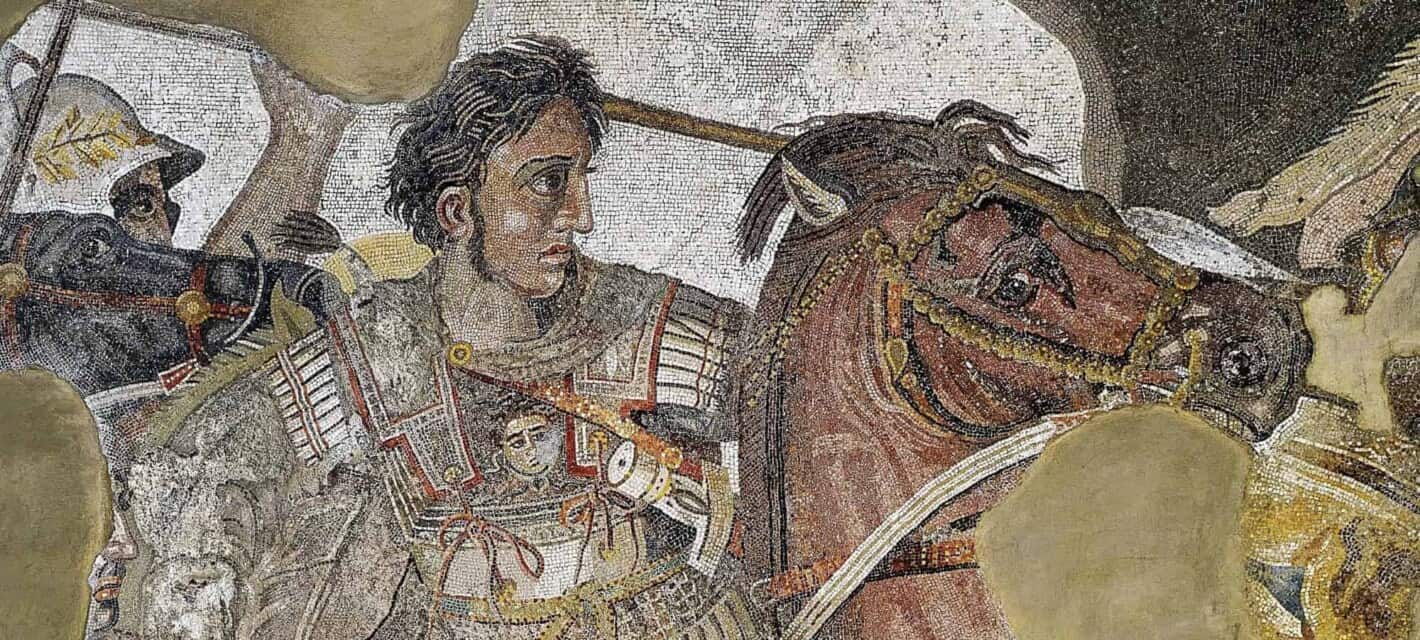Alexander the Great is widely regarded as one of the best commanders in history and regularly tops the ‘best general’ lists compiled by historians. He was born in Pella, Macedon, in 356 BC and became King of Macedonia in 336 BC when his father, Philip II, died. There is no question that he inherited a high-quality army but the first couple of years of his reign were marked by upheaval within his country.
After skillfully suppressing insurgents, he turned his attention towards conquest with Persia seen as the biggest prize. By the time he was 30 years of age, he had created one of the largest empires of all time which stretched from Greece all the way to northwest India. Alexander was never defeated in battle and often overcome a numerical disadvantage to emerge victorious. As well as tactical brilliance, he was also capable of rousing his army in a manner few leaders have achieved.
Throughout history, Alexander has been the benchmark against which great commanders are measured. It is impossible to say how much territory he would have conquered had he lived beyond the age of 32. After his success against Porus in 326 BC, his men forced him to return home. However, he was planning a new series of campaigns in Arabia before his untimely death at the palace of Nebuchadnezzar II in Babylon in 323 BC.
Perhaps it is a testament to how much his enemies feared and respected him that Alexander was only involved in a handful of major battles in his career. In this article, I look at his five most significant victories.

1 – Battle of the Granicus (334 BC)
The Battle of the Granicus was the first pitched battle of Alexander’s reign and is arguably the one where he was closest to disaster and death. After becoming King Alexander III of Macedonia in 336 BC upon the death of his father, Philip II, he quickly gained the support of the army but found himself to be the ruler of a rebellious kingdom. He needed to quell this unrest before doing anything else, and he destroyed the barbarian revolts which threatened his reign. Now he was free to pursue his father’s dream which was to conquer the Persian Empire.
When Alexander crossed the Hellespont and arrived in the city of Troy, Persian King Darius III apparently didn’t feel threatened as he decided not to bother meeting the young troublemaker. At a conference between local satraps loyal to the Persians, they elected to combine their forces and meet the invader at the River Granicus. Instead of waiting until morning to attack, Alexander ordered his men to fight on the very afternoon they reached the river.
Historians disagree on the exact number of soldiers (18,000-30,000 on each side), but it appears as if the armies were evenly matched. A succession of blunders ruined Persian chances of victory from the outset. For example, placing its 5,000 cavalry on the banks of the river was a disastrous move. It was unable to move forward or back and was effectively trapped once the fighting began. The Persian chariots were useless on the muddy ground, and they had little or no leadership.
In contrast, the Macedonians were a well-organized fighting unit with a confident young leader. Alexander made sure he was conspicuous by wearing brightly colored clothes and a white plume on his helmet. If the plan was to distract the enemy, it worked as the Persians became fixated on killing him rather than dealing with the battle as a whole. Alexander was the aggressor from the start, and once his men reached the opposite bank of the river, the fight became a hand-to-hand combat affair.
The Macedonians gained the upper hand, and Alexander spotted that Mithridates, son-in-law of Darius, was detached from the Persian cavalry. However, he was almost killed by a Persian called Rhoesaces who cracked the Macedonian’s helmet with his sword. One of Alexander’s men, Cleitus the Black, saved his king and changed the course of history in the process. The Persians quickly fell apart after losing several leaders. Instead of pursuing the fleeing enemy, Alexander ordered his army to stay, and they began slaughtering the Greek mercenaries that had aligned themselves with the Persians. The Macedonians marched on with little resistance until they encountered the enemy at Issus.

